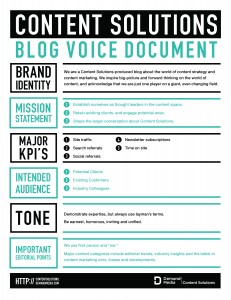The growth of the global eCommerce market should come as no surprise, either to businesses or the growing number of online shoppers active across the globe.
However, the sheer rate of growth is genuinely eye-catching, with global ecommerce sales expected to peak at $ 4.5 trillion by the end of 2021. Of course, this dramatic and constant trend is being driven by customer demand and shifting behavior, with more than two-thirds of shoppers in the U.S. now buying items regularly online.
This is continuing to attract businesses and make ecommerce and increasingly competitive space, but it’s fair to say that many entrepreneurs overlook the real costs of starting an online store or business.
We’ll appraise some of these costs further in the post below, while asking how you can minimize your startup spend without compromising on the value that you offer to your customers.
Key Resources and Online Real Estate
While the costs of launching an ecommerce venture are often relatively low, you will still have to invest proactively in a number of different commercial aspects if you’re to operate successfully.
The first thing that you’ll need to invest in is a website or online store, which will incur hosting, development and inventory costs.
The former can cost up to $ 300 per month depending on the nature of your site and they key features that it requires, whereas developing a professional and high-quality website can cost between $ 5,000 and $ 10,000 on average.
Then there’s the upfront procurement of a unique domain name, which by itself can cost as much as $ 200 per annum. This is a deceptively important investment, however, while you may also want to set aside additional capital to snap up any names that are similar to your brand or home landing page.
The cumulative cost of site maintenance and securing your domain name is also ongoing, and you want to hire an in-house team of development staff and an ecommerce manager.
Of course, this can create total salary commitments of up to $ 150,000 per year, although it negates the ad-hoc costs of hiring contractors and freelancers to work on the evolution of your ecommerce site over time.
Shipping Platforms
Regardless of the inventory that you sell through your ecommerce site, you’ll need to invest in viable distribution channels that guarantee the smooth and timely delivery of your products.
The key to this is to identify a suitable shipping platform, which must simultaneously match the precise needs of your venture and process all of your orders through a single, accessible hub.
However, there are various shipping platforms available on the market, while not all of these have been created equal. More specifically, each one offers variable tools to help implement a clearly-defined logistics plan, with the ultimate goal being to reduce operational costs and drive increased profitability.
Of course, shipping platforms also vary in terms of cost and their underlying payment method, and this is a key consideration when launching your venture.
Advanced and automated platforms such as Linnworks will cost from $ 185 per month, and while this is relatively expensive, this resource can be used to automate various parts of the selling process and minimize the labor hours spent on order processing.
Conversely, some service providers offer less immersive features to users but far greater flexibility in terms of pricing.
Ultimately, the key is to identify a platform that fits within your existing budget, while also ensuring that it’s capable of fulfilling your ecommerce needs and capable of reinforcing your site’s value proposition.
Marketing and Promotion
Given the competitive nature of ecommerce (and particularly rising niches such as sustainable products and pre-planned meals), you cannot rely on customers finding your store by accident.
With this in mind, you’ll need to invest heavily in the promotion and marketing of your site, in a bid to optimize online traffic and drive assisted conversions through various offline ad channels.
This requires a structured and integrated marketing campaign, and one that’s focused on increasing online visibility and creating a recognizable brand that customers can grow to trust and respect over time.
A significant percentage of your spend will be committed to SEO, as this will enable your venture to rank well in relation to targeted keywords and achieve organic search results on the first page.
This, combined with growing brand awareness and recognition, can create a scenario where the venture is increasingly visible to new customers online and capable of driving repeat business over time.
In terms of the cost of successfully marketing your ecommerce venture, this will vary depending on the nature of your campaign and the size of the business.
As a general rule, however, ecommerce firms spend between 7% and 12% of their total revenue on marketing, and once you’ve factored this into your budget you can begin to map the core details of your campaign.
Digital & Social Articles on Business 2 Community
(31)






